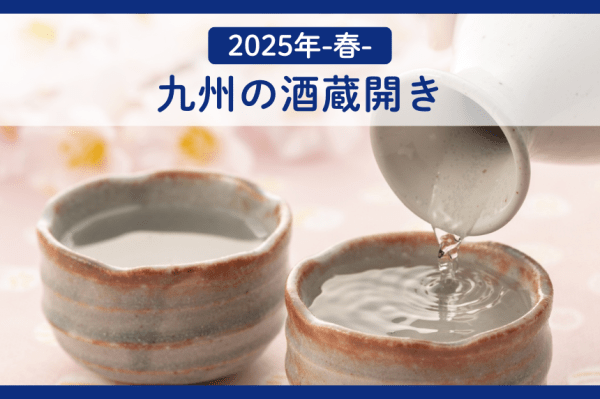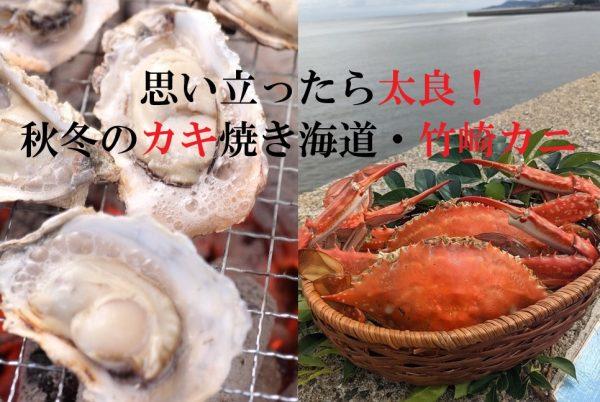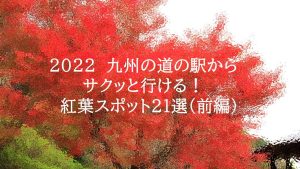Hakata Traditional Performing Arts Museum and Hakata Geigi
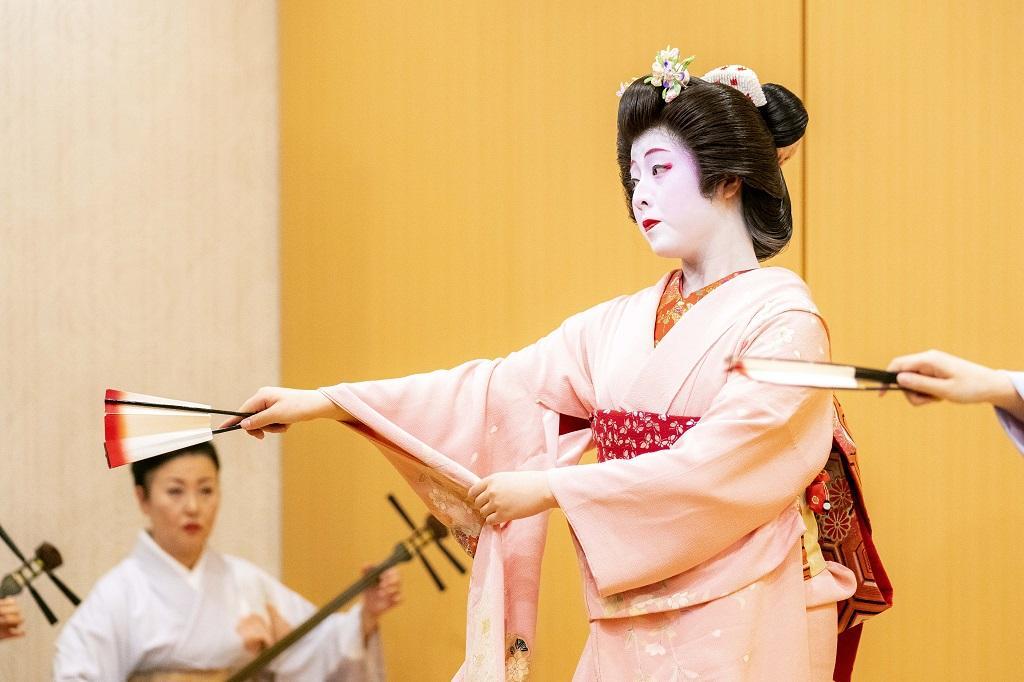
Experience the singing and dancing of Hakata geiko, as well as ozashiki games.
Enjoy the sophistication of Hakata, a city known for its arts and crafts!
At its peak, there were five ticket offices and 2,000 geiko.
Hakata's geiko that became a movie
Geigi (geiko) and maiko tend to be associated with Gion, Kyoto, but there used to be geishas (geiko) in various commercial capitals and entertainment areas throughout Japan. Although the number of geiko and geishas has decreased over time, there are still geiko and geishas such as the Akasaka Geisha and Nagasaki Geisha. The same is true of the Hakata geiko. They appeared in the mid-Edo period, and at the height of their popularity at the beginning of the 20th century, there were five geisha houses, or kenban, and about 2,000 geiko crowded the banquet halls of Hakata. Their bold behavior and good-natured spirit made them so popular that in 1954, a movie was even made featuring Hakata geisha. Let's see how these Hakata geiko sing and dance in person!
Well-known even in Hakata
Enter the World of Hakata Geigi
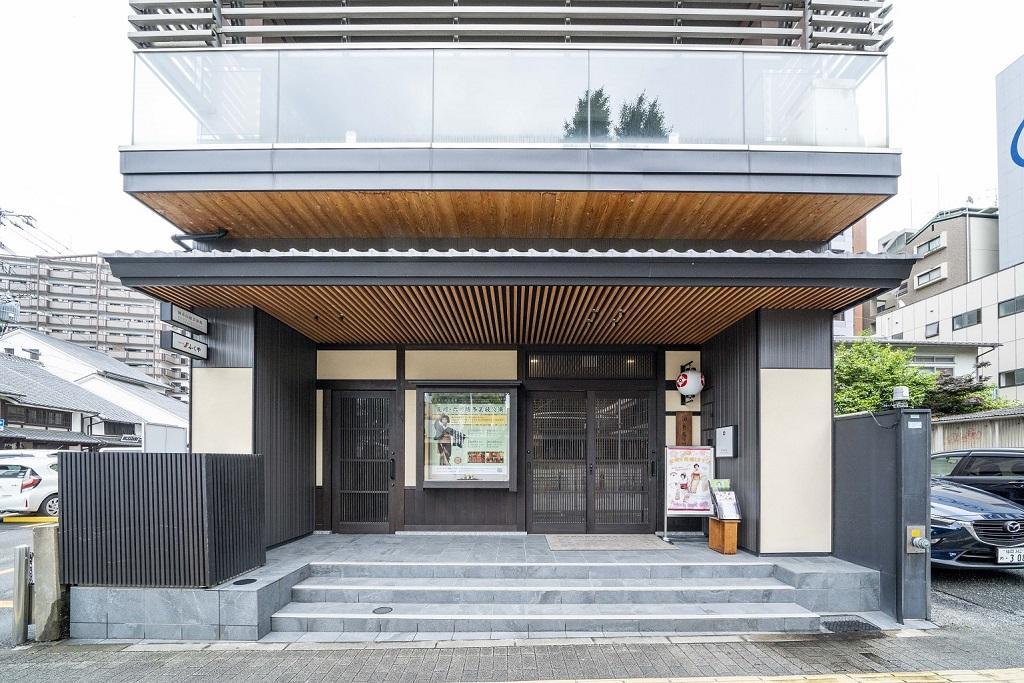
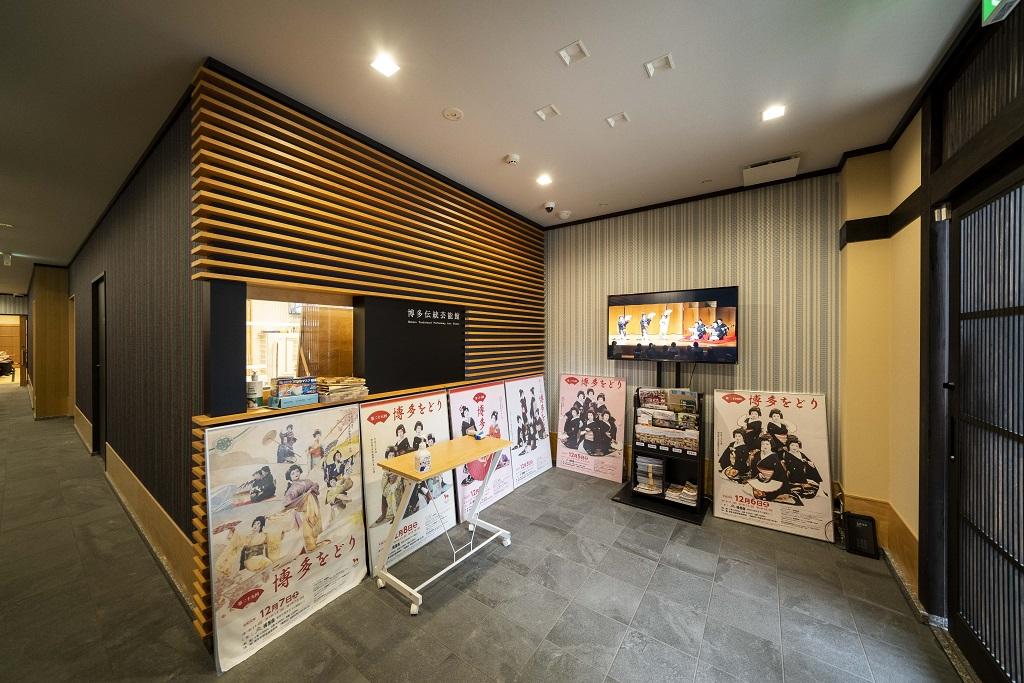
The Hakata Traditional Performing Arts Museum is located almost diagonally across from the Kiyomichi entrance to Kushida Shrine, the main shrine of Hakata, and was opened in 2017 and serves as the office and rehearsal space for the only remaining "Hakata ticket holders" in Hakata. Here, visitors can casually watch regular performances by Hakata geiko, which are held almost twice a month, for 3,000 yen.
A monument of a Hakata obi belt decorates the entrance, and the walls of the corridor leading to the performance hall are decorated with a Hakata textile dedication pattern. The pride and attachment to the traditions of Hakata can be clearly felt. The performance hall seats about 20 spectators. Reservations are required and can be made at the Hakata Traditional Performing Arts Promotion Association Office in the Fukuoka Chamber of Commerce and Industry.
The current 14 geiko performers are interchangeable. On this day, the jikata, who perform songs and shamisen, are Hatoyu, Aika, and Shiori, who performs hanyaku. The tachikata who perform dances are Mamemitsu, Reika, and the hanyaku and kochou dancers. By the way, "Hantama" refers to apprentices and is equivalent to "maiko" in Gion, Kyoto. Now, it is time to enter the world of Hakata geiko.
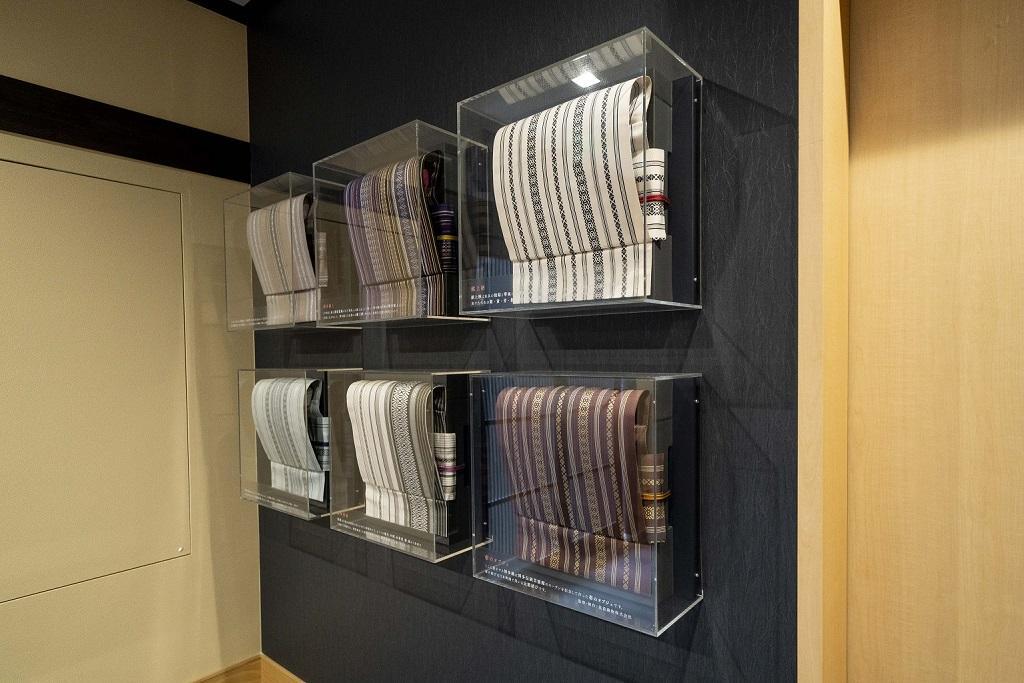
First time to see a geiko's dance up close
Moist with good old Hakata songs
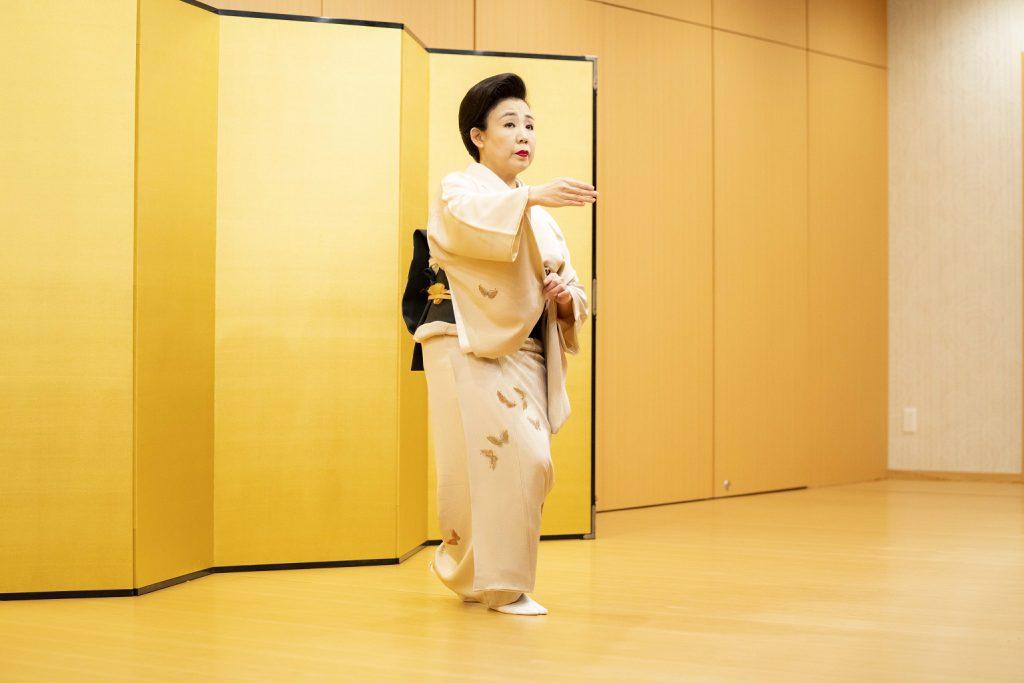
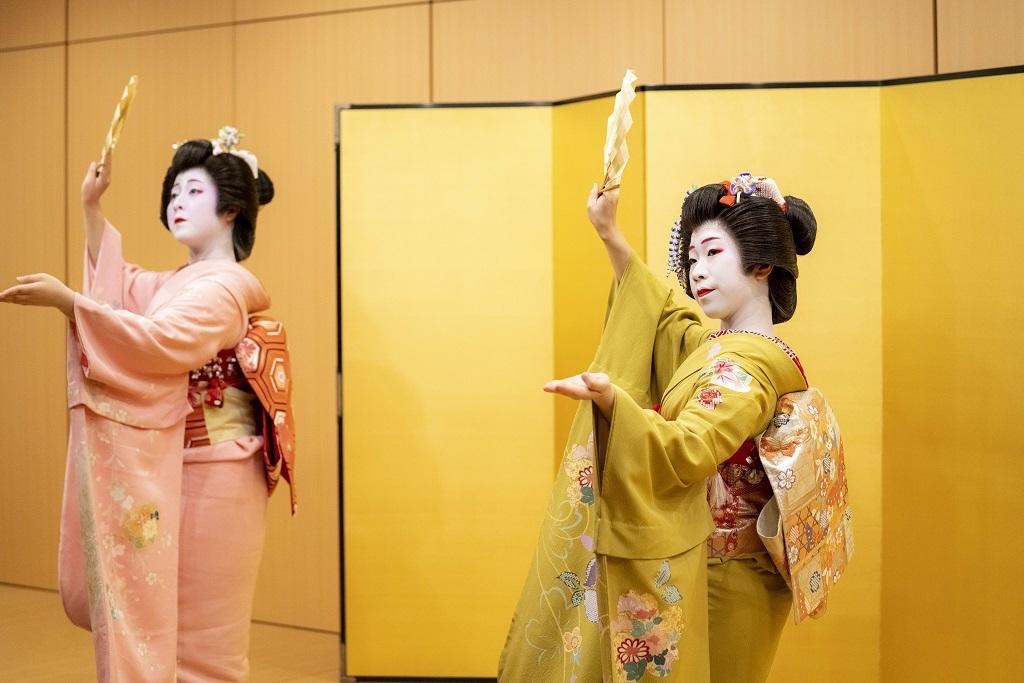
A clapper sounded, and the fusuma (sliding doors) offstage quietly opened, and the two local shamisen and song players appeared on stage. The first song was a chic "Sho-cho-Hakata-bushi" ("When I came to Hakata, I came alone, but when I return, I will be accompanied by a doll"). The first song was a chic "Shosei Hakata-bushi," "When I came to Hakata, I came alone, but when I returned, I took two dolls with me. Veteran performer "Mamemitsu" danced quietly to close the opening of the show. The second song was performed by the tall and slender "Reika. In the third piece, "Four Seasons of Hakata," there were two shamisen players and three in the local area. Then came the hantama, "Hinazuru" and "Kocho. The hantama had peach-cracked hair, flower or knotted hairpins, and kimonos with furisode sleeves.
The last dance was performed by all four dancers. The local dancers sang, "Mede-ta, me-ta, me-ta Wakamatsu-sama, the branches flourish and the leaves grow thick," and the four cubists sang, "Sa~asa, sa, ukiita, ukiita, ukiita. Come to think of it, this lyric appears in Sayuri Ishikawa's "Fires and Fights are Edo's Flowers! The crisp shamisen and singing rocked a bit. The first half ended with a lively dance. Next, it was time to experience the "ozashiki" (Japanese banquet room).
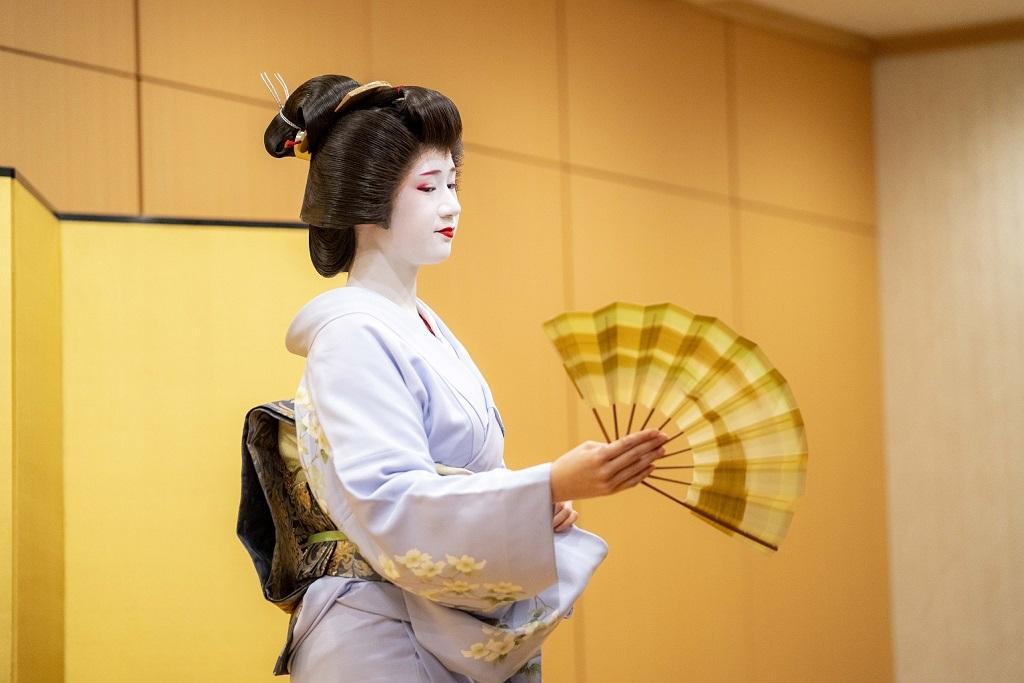

Tora, tora, tora, tora."
Addicted to Ozashiki Janken (rock-paper-scissors-scissors game)!
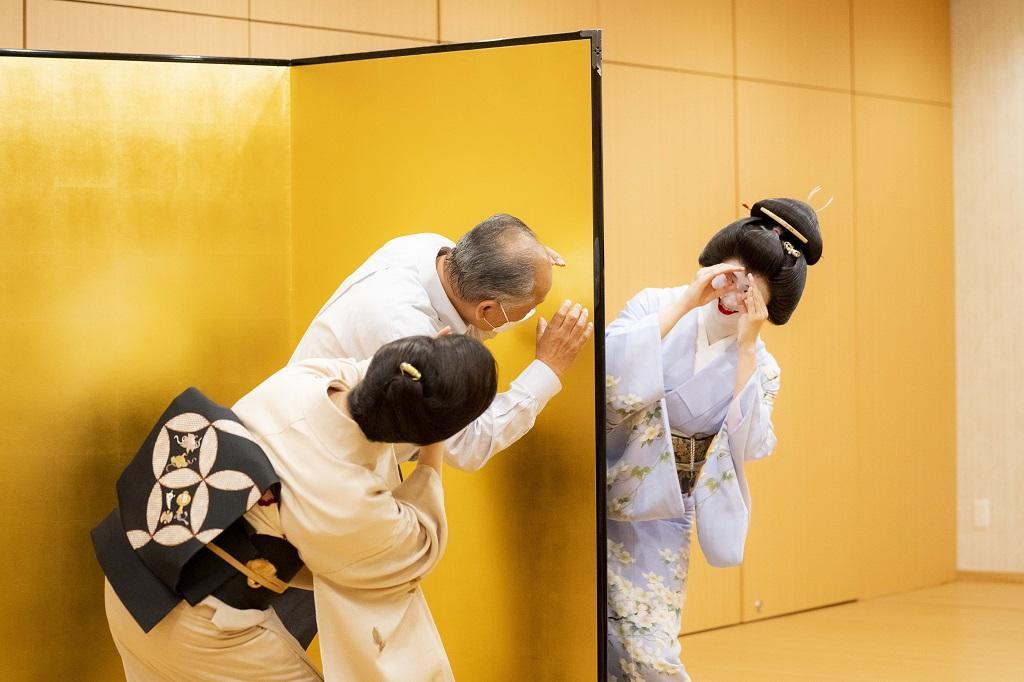
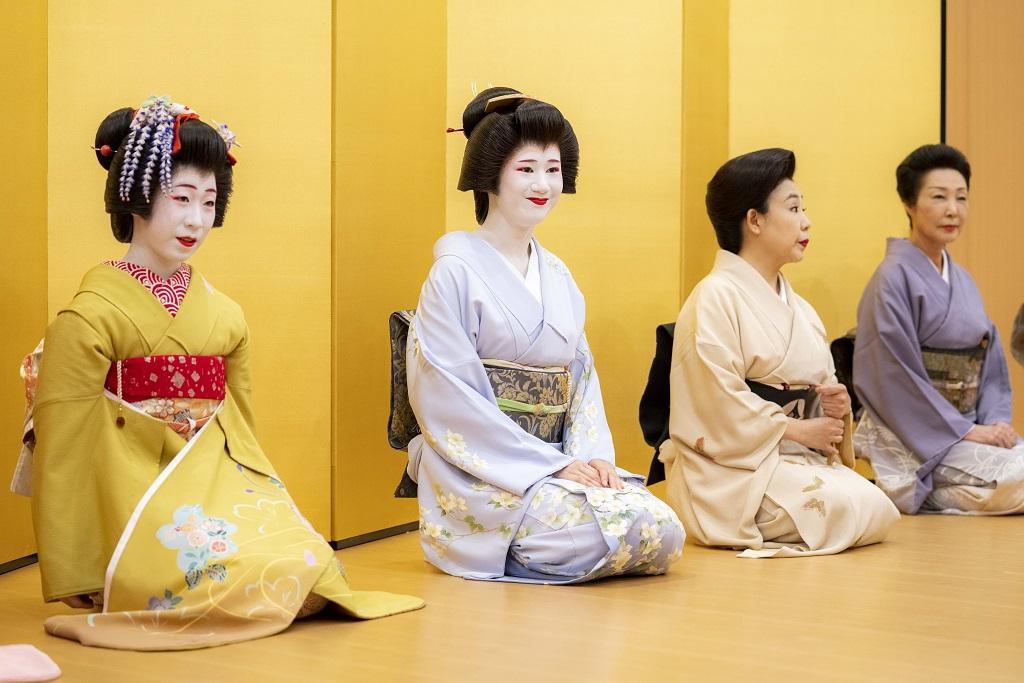
Spectators are welcome to participate in the "ozashiki" games (not allowed during the period of the spread prevention measures), and the content of the games also varies from day to day. The game of the day was "Toratora," a game of rock-paper-scissors in the tatami room. The game is said to be named after Kiyomasa Kato, a warlord famous for exterminating tigers. Using gestures, they play "Kiyomasa Kato," "tiger," and "Kiyomasa's mother. Kiyomasa Kato is strong against tigers, but he is weak against his mother, who is not very smart. However, the old mother is weak against the tiger. In other words, the tiger is strong against the mother, the mother is strong against Kiyomasa, and Kiyomasa is strong against the tiger. It is the three-loop rule of "Goo, Choki, Pah."
The participants, flanked by a gold folding screen erected in the center of the stage, look through the screen to find out who their counterparts are to the accompaniment of a haayashi song and call out "torah-torah-torah-torah, torah" to play the roles of "Kiyomasa," "tiger," and "mother. Kiyomasa holds a spear, the tiger is on all fours, and the mother bends at the waist and holds a cane. With this gesture, they would appear in front of the golden folding screen and play the game.
The performers wait for their opponents to come out of the partition of the folding screen with their thumbs and forefingers touching their eyes in a "spectacle" pose. Then, after the third call of "Torah, torah, torah, torah," they step out of the partition in a posture of victory. The winner is immediately decided. Incidentally, when the author went out in the tiger pose, her opponent, Reika-san, was Kiyomasa Kato. I lost.
After the enjoyable experience of playing the ozashiki, it was time for a question-and-answer session with the Hakata geiko. Veteran Mamemitsu-san took the lead, answering even slightly practical questions in a softly offhanded manner. At the end of the session, a commemorative photo was taken with each group of participants. The 50-minute viewing/experience went by in a flash. As we left the Hakata Traditional Performing Arts Center, we were humming "Torah, torah, torah, torah. Almost an endless loop. Oh no.

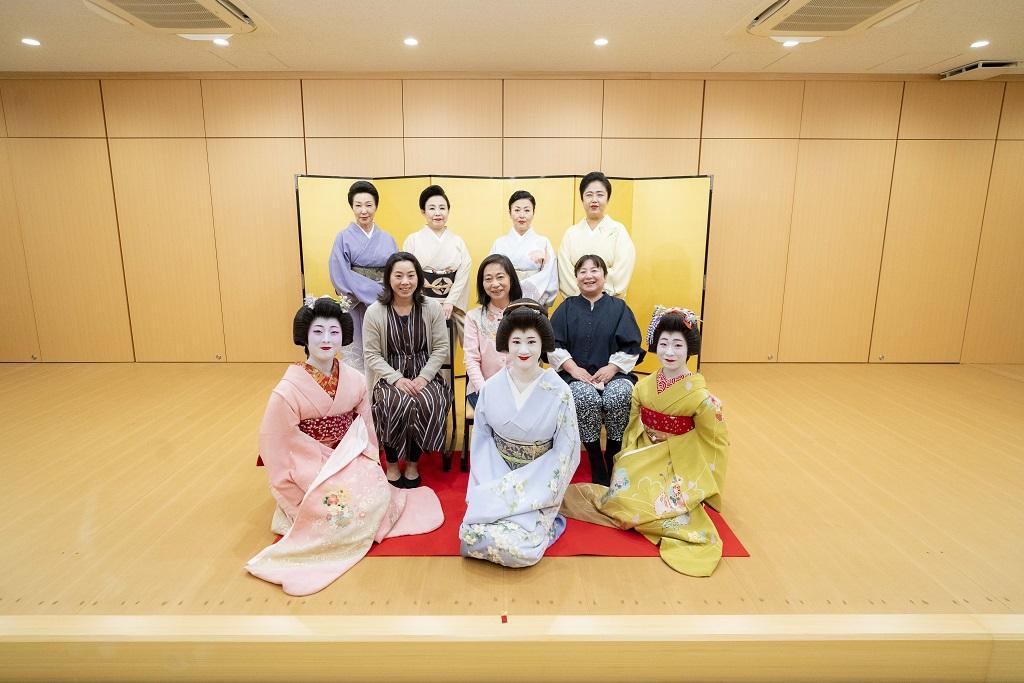
Hakata Traditional Performing Arts Center
| name | 2?20 Reisen-cho, Hakata-ku, Fukuoka City, Fukuoka ☎092-441-1118(Hakata Traditional Performing Arts Promotion Association Secretariat, Fukuoka Chamber of Commerce and Industry) |
|---|---|
| Charge | 3,000 yen (by reservation only) |
| supplementary information | Related URL:. https://hakata-geinou.jp |

